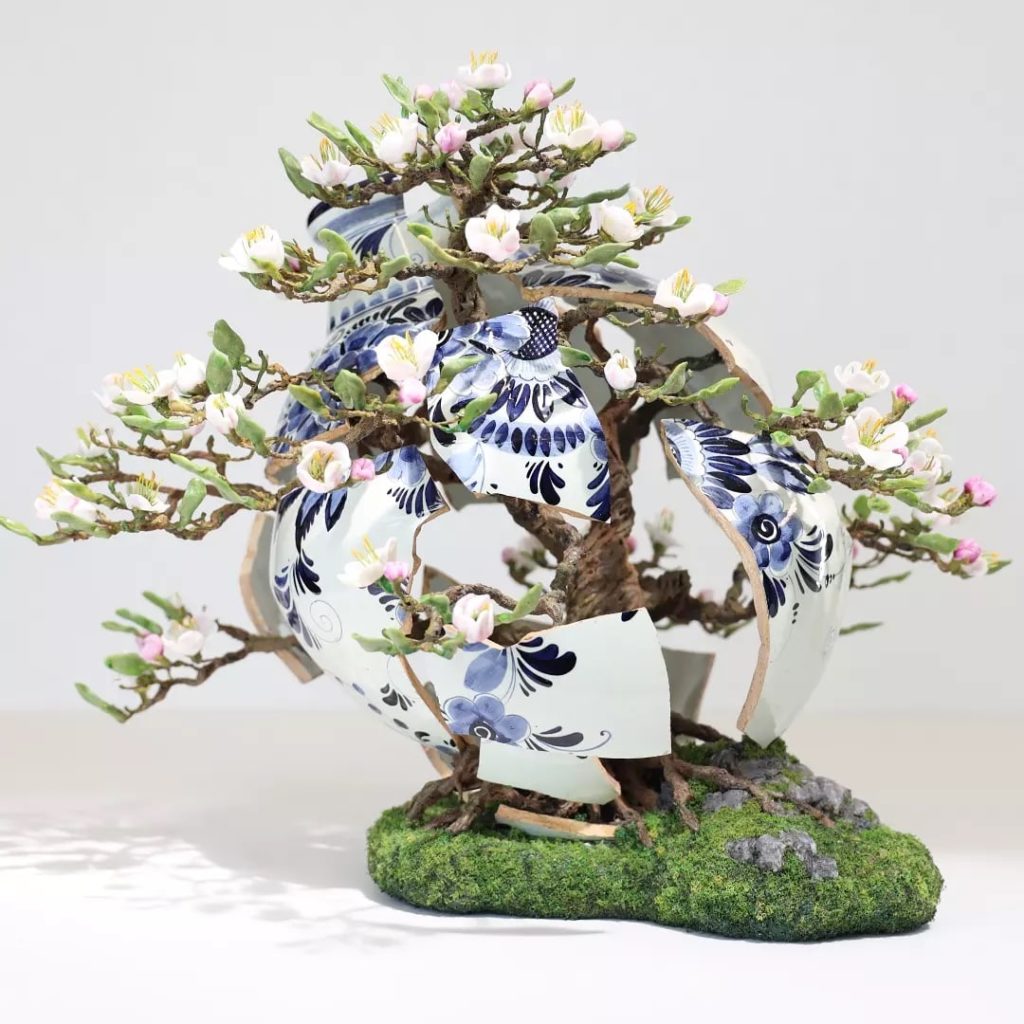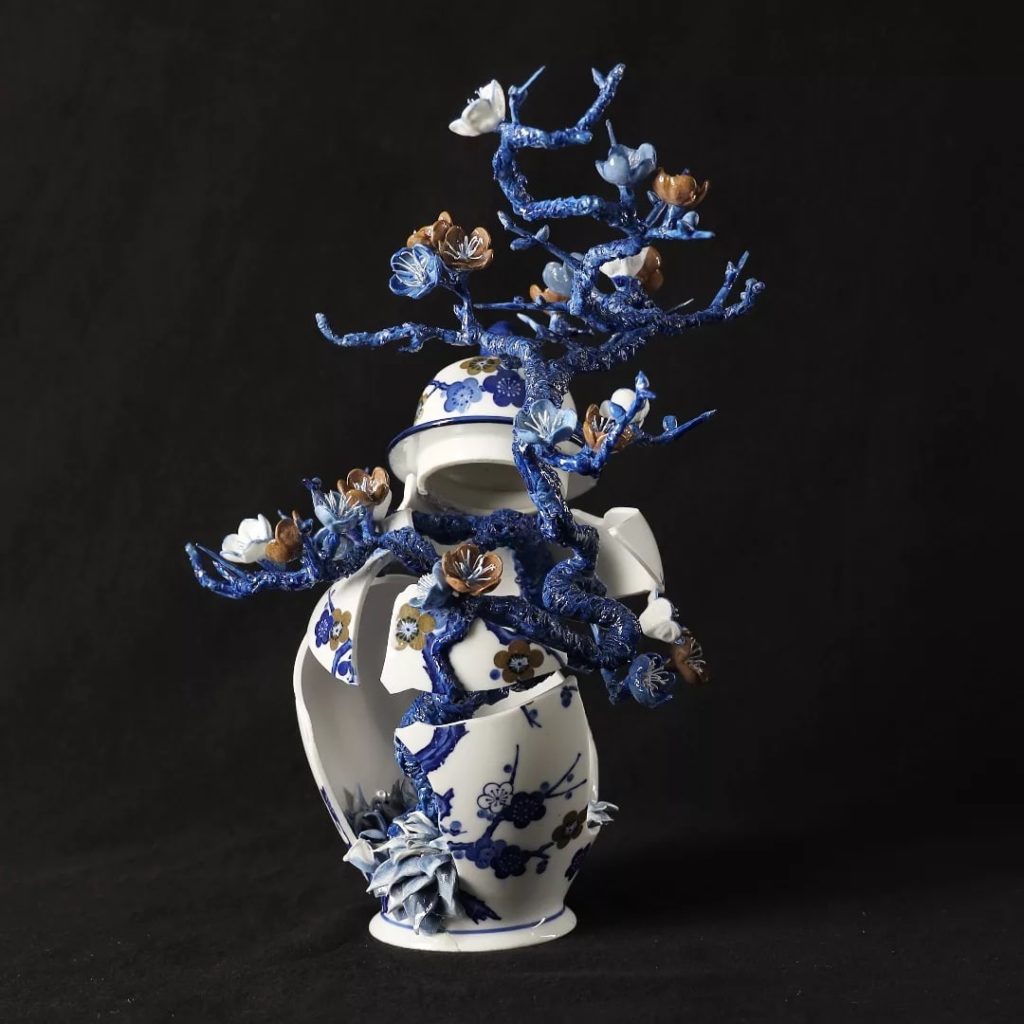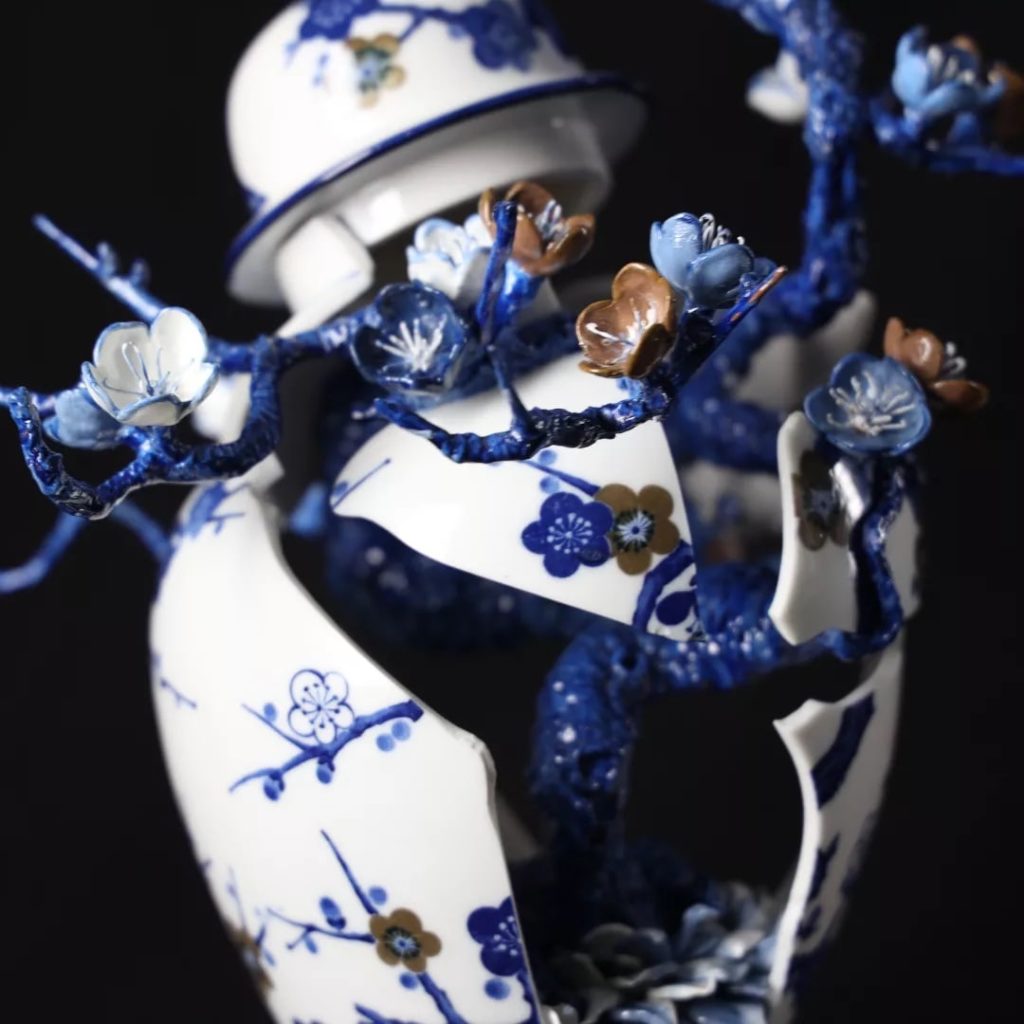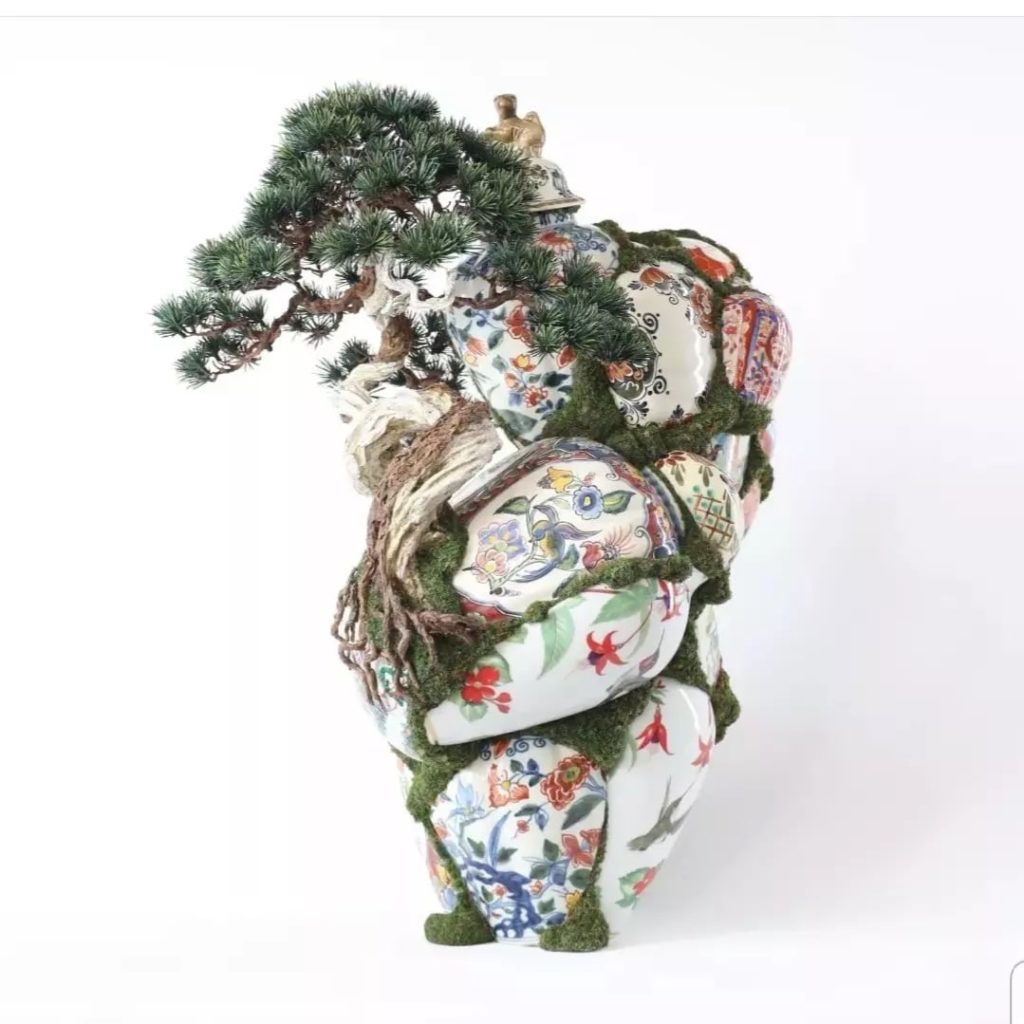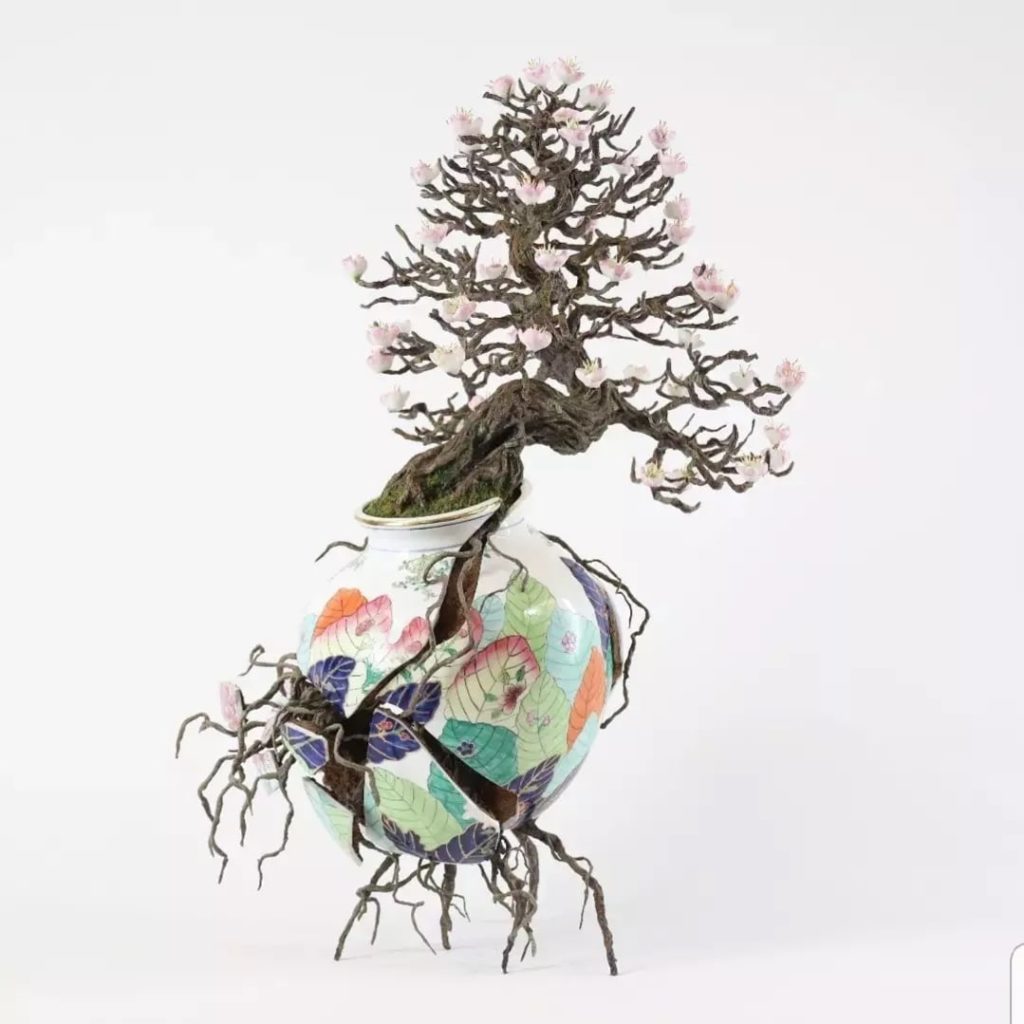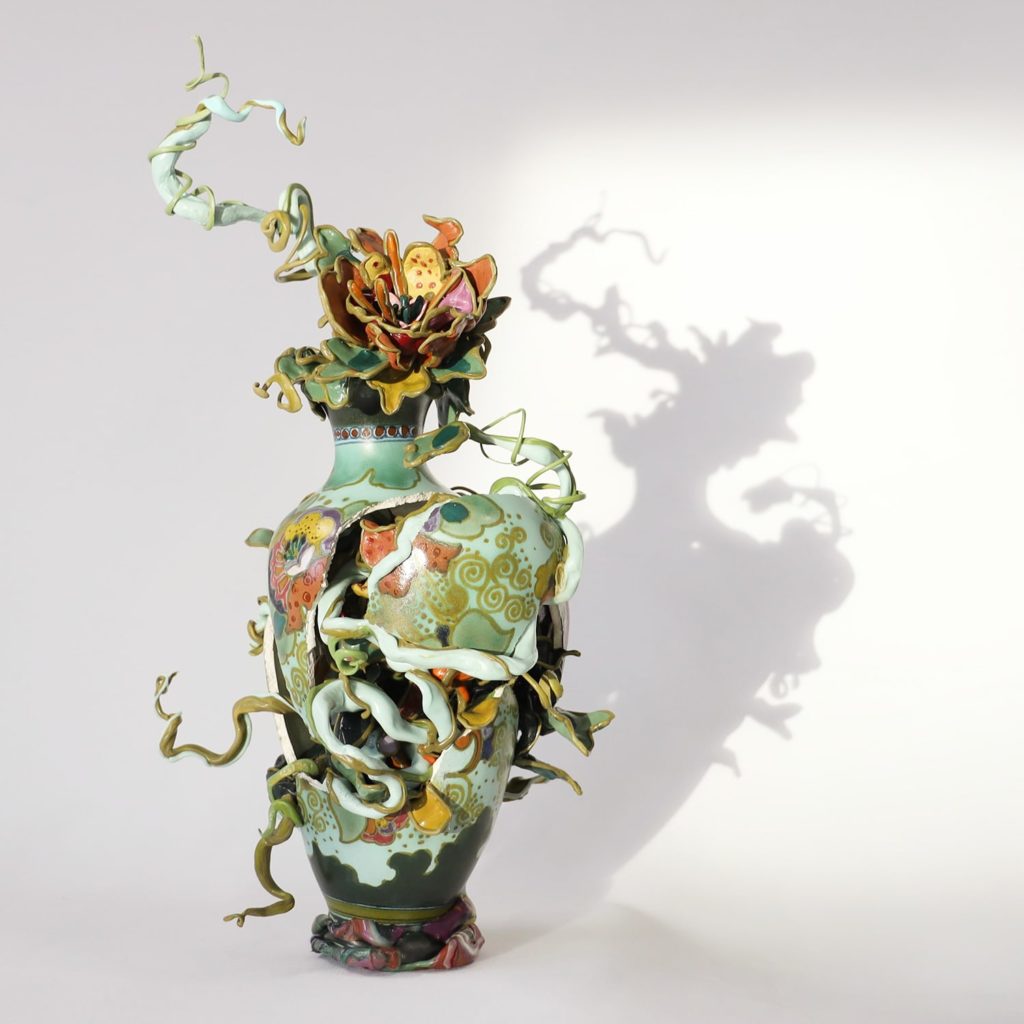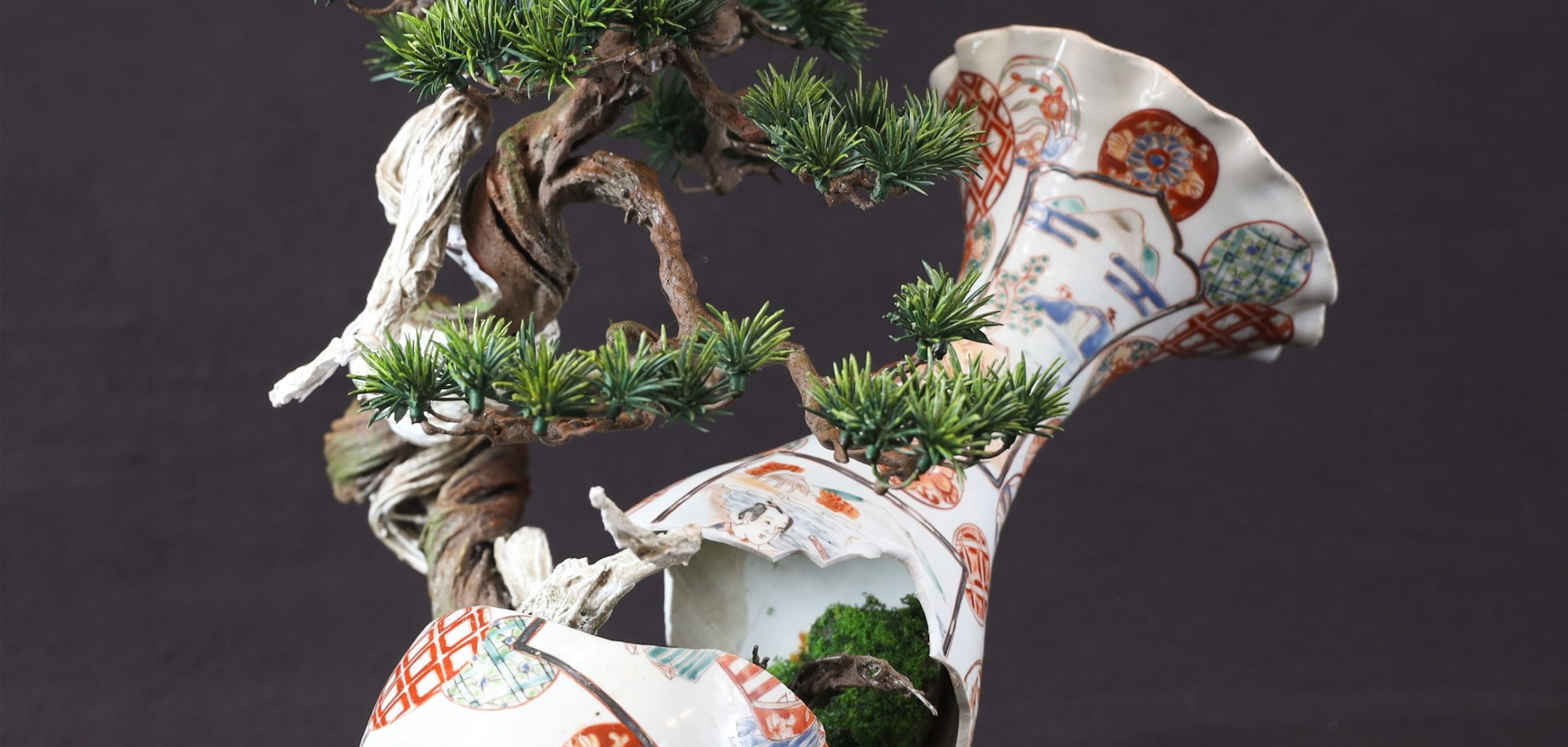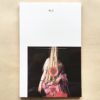TWS –Hi Patrick, can you please tell us something that you’d like our readers to know about you?
PB –At the moment I am busy for The Art Market San Francisco where I will show some pieces with Duane Reed Gallery. My first gallery in the States.
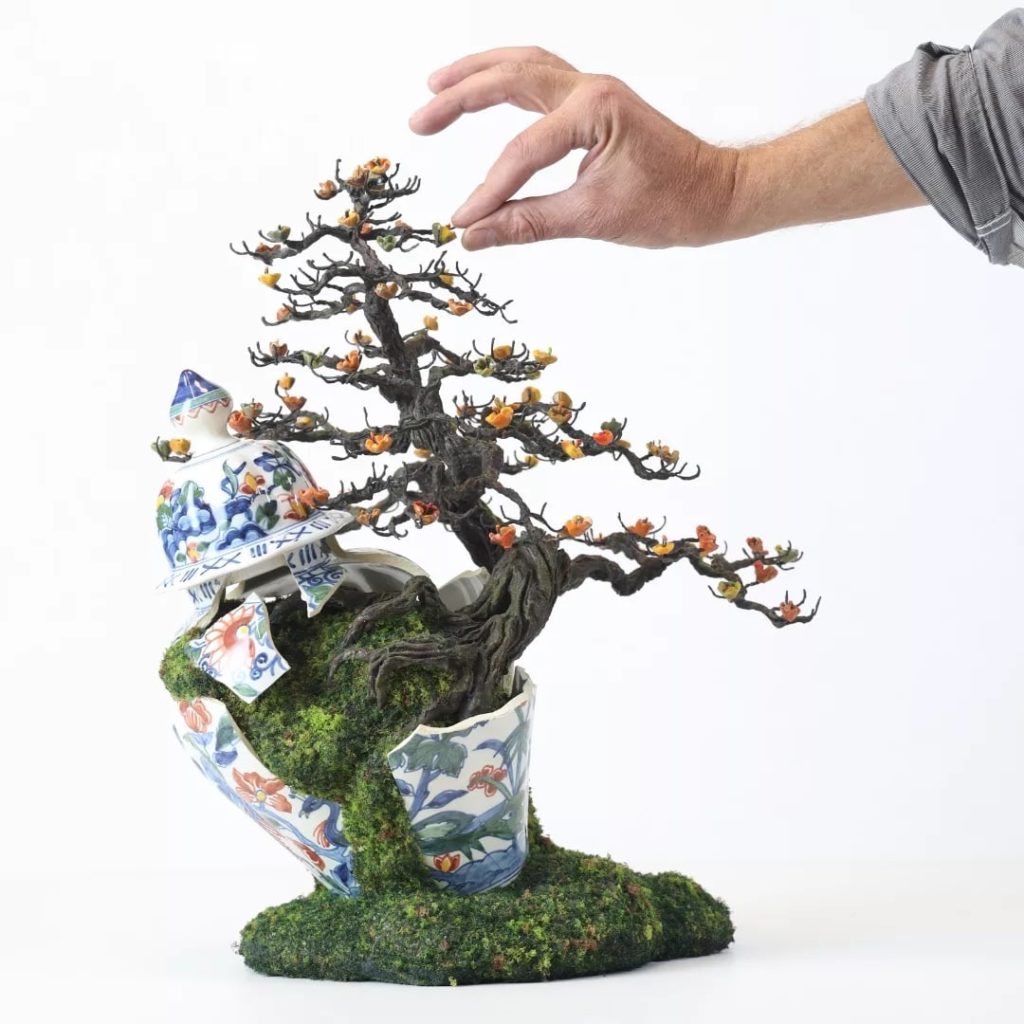
TWS –I read that your parents ran an antique shop when you were a child. How do you recall your relationship with the items they had at the shop? How you felt about them? And how do you feel that this fact has influenced you becoming an artist?
PB –My relationship with the shop has encouraged my curiosity for one of a kind items. With my parents we made trips to the UK to look for special antiques. I loved being part of those quests and in particular the weird English pottery was fascinating to me then.
TWS –Your work draws from many different influences, making it very personal and unique. Which ones do you feel have had the most profound impact on you?
PB –if I have to pick one, I would say the history of making and decorating porcelain. When I studied at the Royal Art Academy in The Hague I rediscovered this fascination of my childhood. As opposed to art history which was so much about the ego of the artists, I found the long history of chinaware liberating in its freedom to adept styles and techniques from many traditions and cultures.

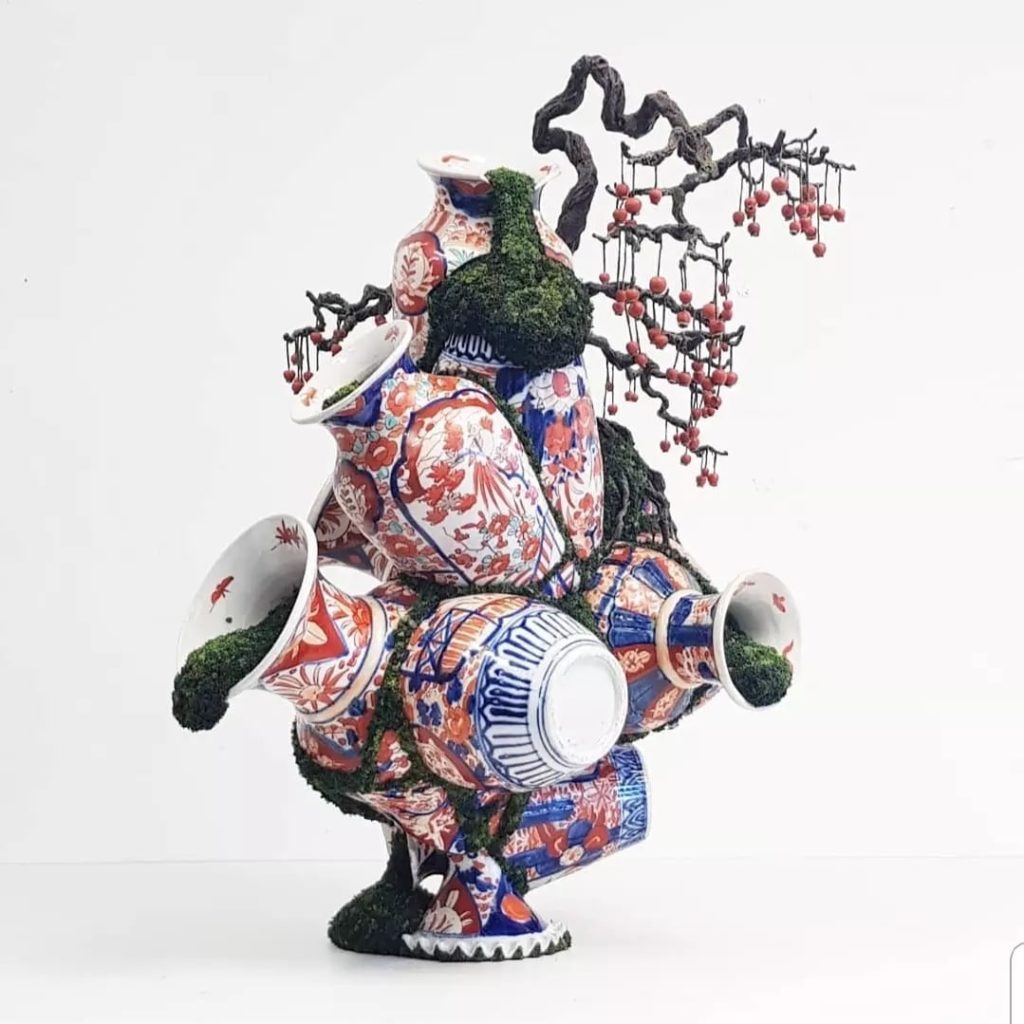
TWS –Miniature landscapes, bonsais, porcelain… you seem very attracted to the China’s and Japan traditional culture. What led you to that? What is that captures your attention from these ancient cultures? And how you integrated these elements in your art practice?
PB –In my recent series of sculptures, I combine the ancient art of ikebana (from Japan) and bonsai (originally from China) with antique porcelain that seem to be transformed by the unstoppable force of nature. In Holland we have a long tradition of influence by the East. What we call typically Dutch like Delft blue was originally (in the seventeenth century) an attempt to imitate the very popular porcelain that we imported with sailing ships from China. Because we didn’t know how to make porcelain, we used ceramics with a layer of white. In my work I often use these old Dutch “imitations” combined with the typical originally Chinese bonsai trees.
TWS –Does your artworks include real living plants? How developed are your gardening skills nowadays?
PB –I don’t use any living or organic materials in my sculptures. The vegetation is fully handmade with iron wire and plastics. In my studio garden however I have a nice collection of bonsai that I formed over the years. I use those as an inspiration.
TWS –Can you walk us through the process of creating one of your series? How much planificación and improvisation there is on your complex sculptures?
PB –My recent sculptures are mostly improvised. I don’t do sketches or planning. I start with breaking one or more vases. I have to go with how they break. The shape of the vases, their decorations and background inspire me to go along.
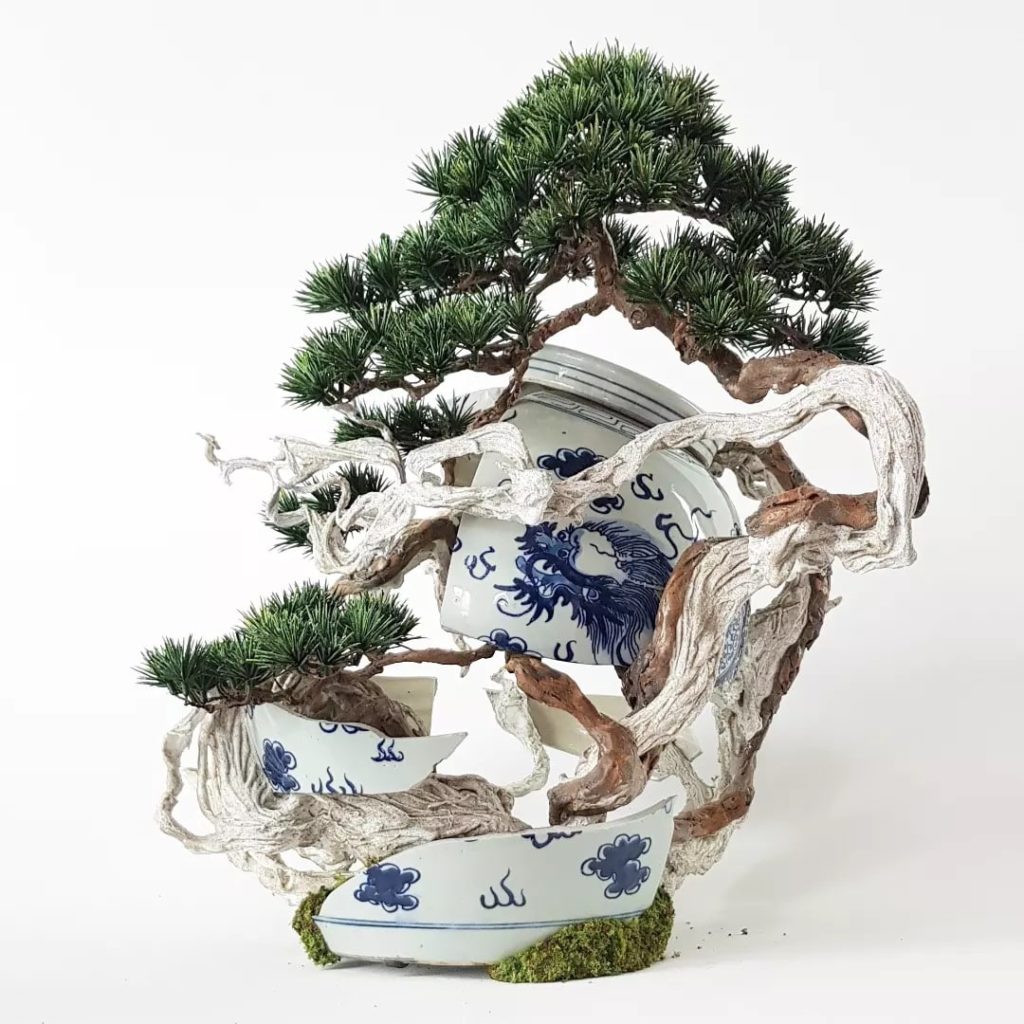
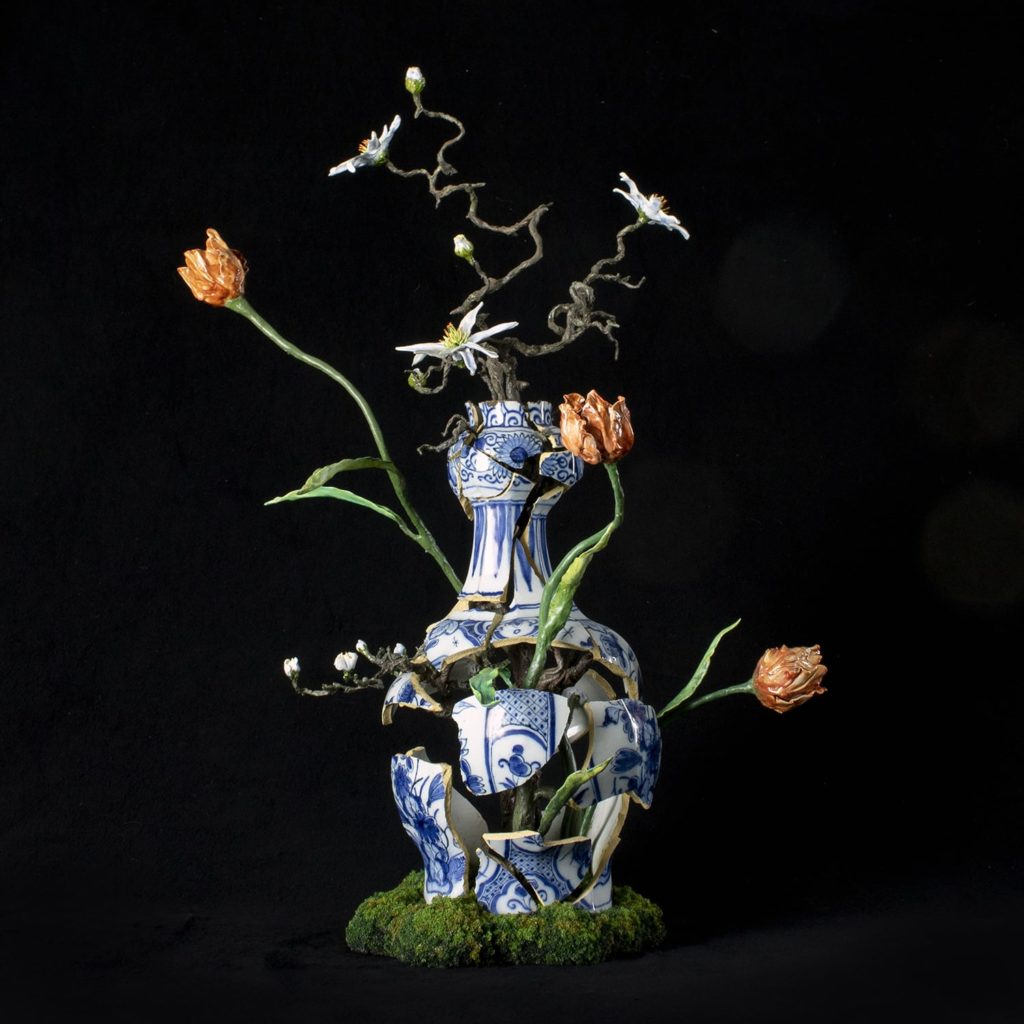
TWS –Creation and destruction come together in your work. Which one moves you more as an artist? How do you find the balance between these two forces?
PB –Those two forces are bound together like live and death. My work is mostly about the power of nature. In order to make it stand out, I use destruction. Like you need darkness to see light.
The unstoppable force of nature that we are part of, has been the main theme of my work for the last years. In the 4,5 milliard years that our earth exists, nature on it has overcome many big disasters caused by asteroids and ice ages. What you see after a period like that is how nature slowly comes back with new species and forms that are better suited for the new circumstances. Unless we drastically change our behaviour, it looks as if this world is heading towards a new disaster caused by the homo sapiens. For years I have been making post-apocalyptic landscapes that were originally inspired by the small landscapes you can see in the middle of old porcelain plates from China and later from the imitations in Germany. These art pieces were little landscapes hanging free in the air often with people on it, busy taking care of nature. In order to concentrate more on the force of nature itself I picked up my old fascination for porcelain again. The shiny surface of the porcelain is a perfect contrast with the natural elements that seem to burst out of their shell. I developed my own techniques to make bonsai trees and flowers using coconut fibres, polymers, kaolin and quarts. These last two ingredients can also be found in… Chinese porcelain.
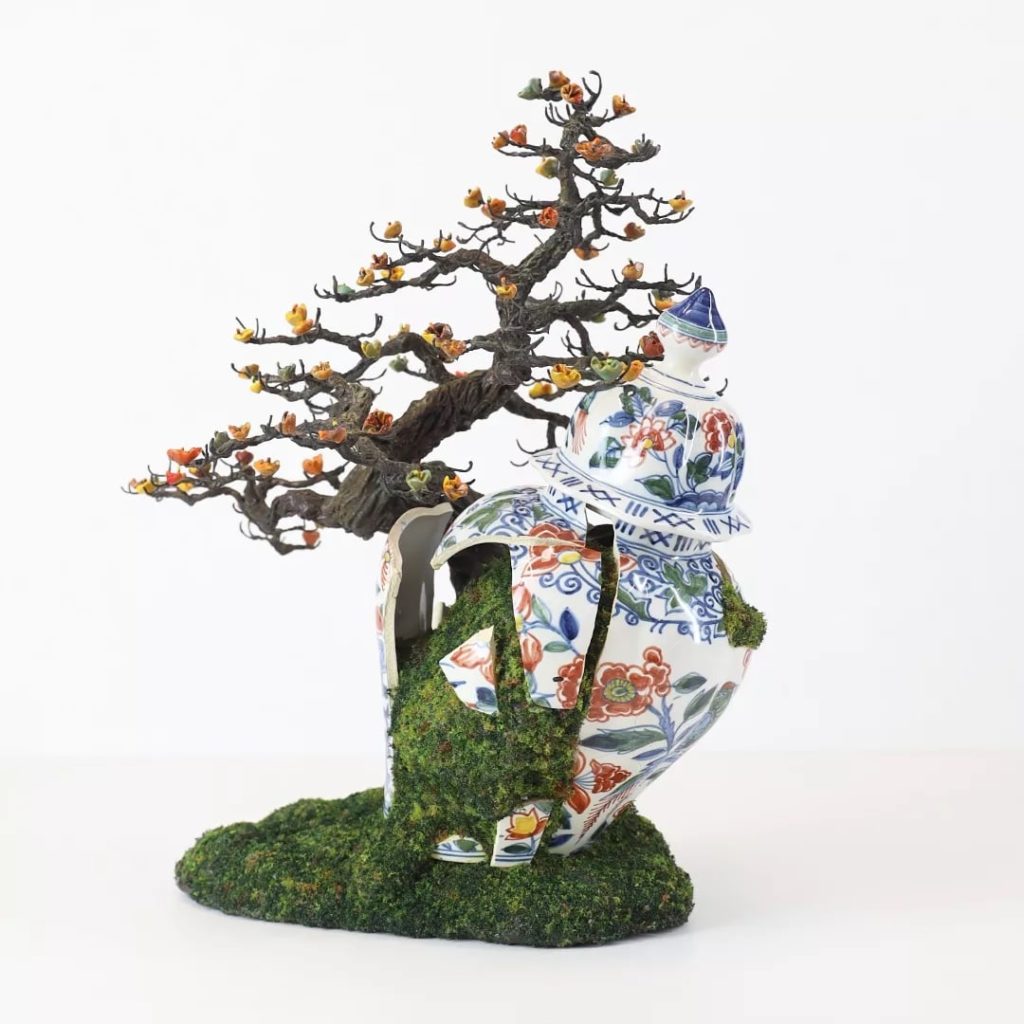
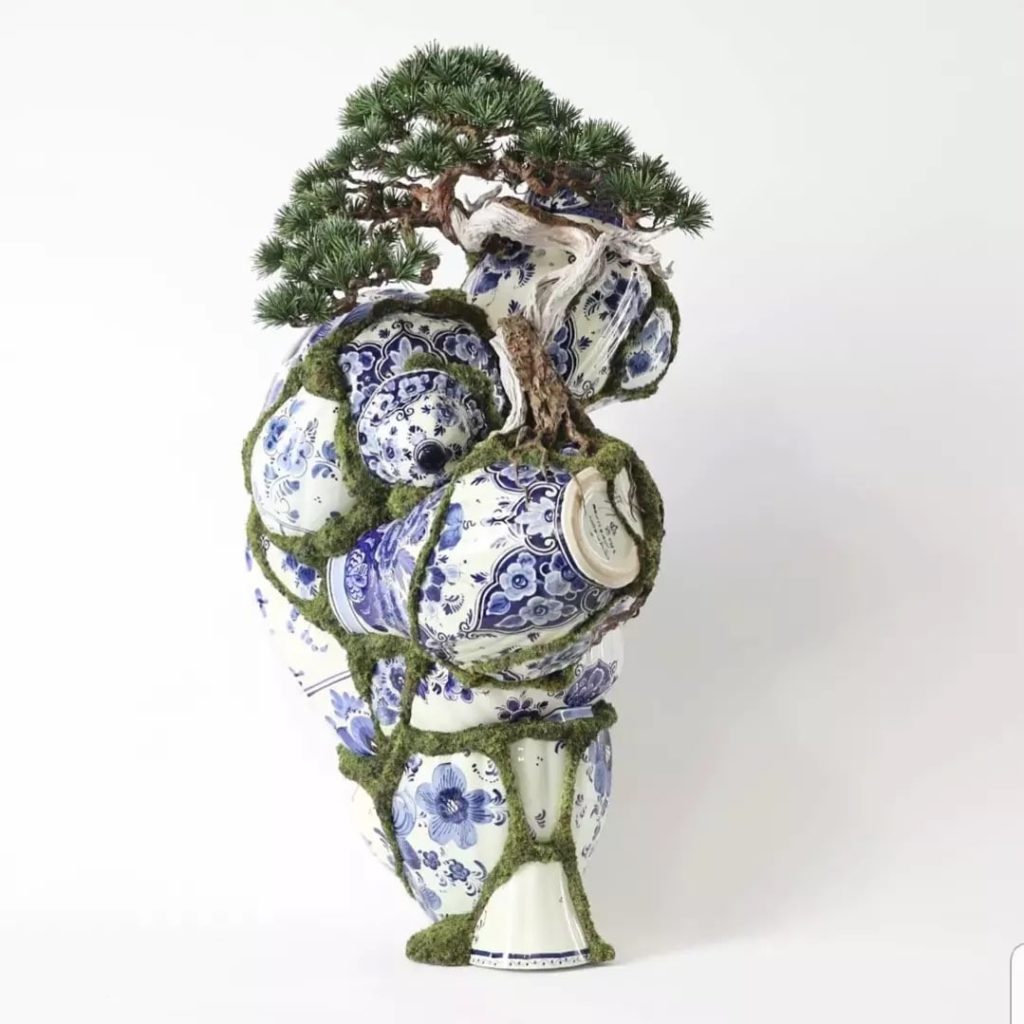
TWS –Your work also deals with nature and the human impact on it, but also with how nature can impact on man-made things. Can you tells us more about how and why you focus on this issue?
PB –No matter what mess we make of this world. Nature will find a way to adept to new circumstances. With or without us.
TWS –Do you feel your work in in any way related with collage as a medium?
PB –To be honest I did not think about that much. But I guess you can say the way I combine all the different elements in my work is a bit like 3D collage.
TWS –What’s next for Patrick Bergsma? Which are the projects that you’d love to develop in the following years?
PB –The Expanding China series are still the most interesting for me to develop further. I am planning to make some pieces with ikebana inspired flower arrangements. I would also like to try something with stainless steel later this year.
Find more about Patrick Bergsma on his website or Instagram
